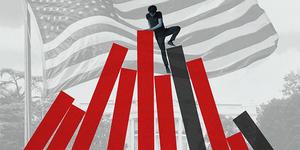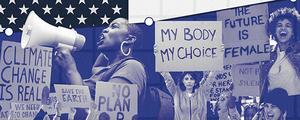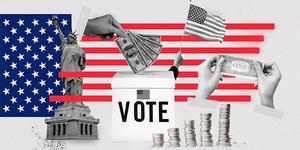WASHINGTON, D.C. -- Forty percent of U.S. registered voters, as of late September, either plan to vote before Election Day or have voted already. While lower than the 2020 figures measured amid the COVID-19 pandemic, the proportion of early voters this year is the same as or higher than those captured in other recent election years.
Early voting intentions (including reports of actual early voting) have increased over the course of presidential election campaigns since 2004. These increases surpassed double digits in the 2012 and 2020 election years. Consequently, the final percentage of early voters this year could approach or exceed 50% by the end of the 2024 election campaign.
The latest data are based on a Sept. 16-28 Gallup poll of U.S. registered voters, completed before most Americans were able to vote early. As data from previous election cycles show, early voting intentions are not set in stone -- many voters who in September or early October are not considering voting before Election Day take advantage of opportunities to do so in the final weeks of the campaign.
In 2020, Democrats were much more likely than Republicans to say they would vote early, in contrast to prior election years when there were no meaningful partisan differences. This year, significantly more Democrats again say they plan to vote before Election Day. The current 15-percentage-point partisan gap in early voting intentions -- 46% for Democrats, 31% for Republicans -- is similar to the 18 points separating Democrats and Republicans at the end of the 2020 campaign.
Political independents are about as likely as Democrats this year to say they plan to vote before Election Day, whereas in 2020 they were on par with Republicans’ lower level. In all prior years, independents were, by a small margin, the least likely party group to vote early.
Early voting does confer advantages to the political parties, who can then focus their mobilization efforts nearer Election Day on turning out infrequent voters or swing voters once the votes of their reliable supporters are “banked.”
In addition to political party, early voting also differs by age. A slim 51% majority of older voters, those aged 65 and older, say they will vote early this year. That compares with 41% of registered voters between the ages of 50 and 64 and 34% of voters under 50.
In-Person Voting Likely to Be Higher in 2024 Than in 2020
In addition to measuring when they will vote, Gallup asked registered voters how they plan to vote. More states have expanded vote-by-mail opportunities in recent years, and many voters are choosing to mail in their ballot rather than visit their polling place on or before Election Day.
All told, 69% of registered voters plan to cast their ballots in person this presidential election year, while 21% plan to vote by mail and 6% are unsure how they will vote. This represents a significant decrease in mail voting (35% in 2020) and an increase in in-person voting (60%) compared with four years ago.
That shift away from mail voting is apparent among all party groups, but particularly among Democrats. In 2020, Democrats were about as likely to vote by mail (47%) as to vote in person (50%). Now, the percentage of Democratic mail voters is down by 20 points, to 27%. Mail voting is also down 13 points among independents and 11 points among Republicans.
Republicans remain the group most likely to vote in person, with about three-quarters planning to do so, slightly higher than in 2020.
Older voters are most likely to say they will vote by mail -- 27% of those aged 65 and older say they will do so, compared with 17% of voters aged 50 to 64 and 19% of those under 50.
About Half of U.S. Voters Plan to Vote in Person on Election Day
Taking into account both when and how registered voters plan to cast their ballot, a total of 51% say they will vote in person on Election Day, by far the largest group. Early voters break about equally between those who will vote in person (18%) or by mail or absentee ballot (20%). Most of the rest are unsure how they will vote this year.
In 2020, early voters were also split about evenly between in person and mail voters.
More Republicans who plan to vote early will vote in person rather than by mail or absentee ballot, while for Democrats, more early voters will be casting absentee ballots. Close to six in 10 Republicans plan to vote in person on Election Day, while under half of Democrats and independents intend to do so.
In 2020, Republicans were also more inclined to vote early in person than by absentee, while Democrats were more likely to mail in their ballots rather than vote in person before Election Day.
Bottom Line
About four weeks remain until Election Day, and some voters have already cast their ballots. Based on voters’ intentions as of late September, the bulk of voting should take place on Election Day. But as prior years’ polling has shown, many more voters will likely end up voting before Election Day than intended to do so weeks prior, and it could be the case that the majority of 2024 ballots are cast before Election Day.
While mail voting promises to be less common than it was during the 2020 pandemic, that method is still preferred much more by Democrats than Republicans. If absentee ballot processing and counting stretches beyond Election Day, particularly in larger cities with the greatest number of voters, the ballots counted later will likely contain more votes for Democratic candidates than Republican candidates, as occurred in 2020. Those absentee votes could be enough to push Democratic candidates over the top in closely contested elections by the time all votes are counted.
To stay up to date with the latest Gallup News insights and updates, follow us on X @Gallup.
Learn more about how the Gallup Poll Social Series works.
View complete question responses and trends (PDF download).





